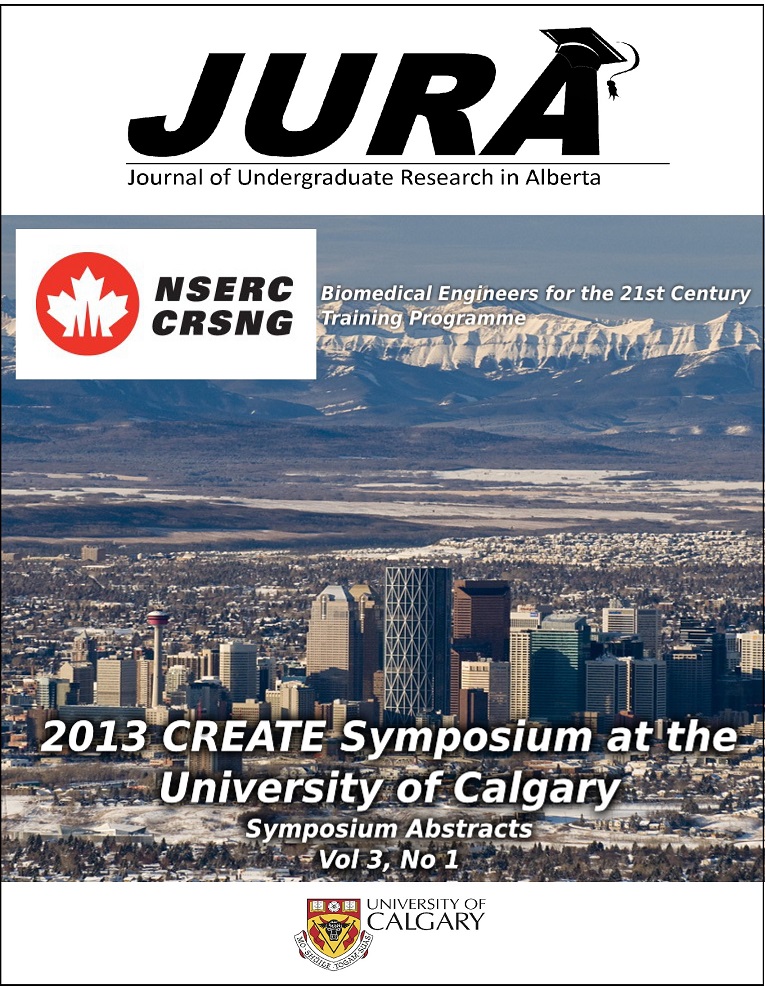Experimental characterization of red blood cells with a macroscale in-vitro model
Keywords:
red blood cells, non-Newtonian fluid, fluid dynamicsAbstract
INTRODUCTION
In order to understand the non-Newtonian properties of blood, it is necessary to understand the behaviour of red blood cells (RBCs) in suspension. The main focus of this experiments was to develop a better understanding of the mechanism behind the axial migration of RBCs towards the center of a vessel during flow. An exact explanation for the lateral migration of RBCs toward the central axis is not available. The general consensus is that it is because RBCs are deformable particles that they move toward the axis, while rigid bodies, like the platelets also present in blood, are pushed towards the wall [1]. Most studies agree that the parabolic velocity profile within small vessels causes deformation of the RBCs. This deformation is asymmetric for cells that are off center, and this lateral asymmetry induces lateral migration [2]. However for larger vessels (of diameters >1mm) there is no clear understanding of the mechanisms involved. The analysis of this complex problem was approached from a basic large scale physical model in hopes of understating the wall interactions that might lead to the RBC migration.
METHODS
Balloons filled with fluids of different viscosities were used to model RBCs. The fluids used include water, glycerine and honey. The balloons were towed using a step motor traverse across an aquarium filled with glycerine. A force balance was attached to the traverse and the balloons were attached to it by means of a sting. Tests were performed at constant speeds corresponding to a particle Re of 10 for each balloon. Each balloon was tested at varying distances of separation from the wall corresponding to ratios of separation distance to particle diameter (S/D) of 2, 1 and 0.5, running 10 trials for each. Similar tests were also performed with a tennis ball wrapped in electrical tape, which served as a rigid control.
RESULTS
The data obtained for the lift force away from the vessel wall was recorded. Average values of the lift force were then used to calculate the average lift coefficients. This data is presented in Figure 1.
DISCUSSION AND CONCLUSIONS
As seen in Figure 1, there is an increase in lift coefficients as the particle gets closer to the wall in all cases. This difference ranges from a 92.5% increase between a ratio of S/D =1 to S/D= 0.5 in water to a 36.4% increase in the same comparison for honey, with glycerine lying in between at an increase of 51.3%. In the same S/D change, the rigid control showed an increase of only 6.4%.
The results obtained from this macro scale model suggest that wall effects do play a role in RBC migration and that the deformability of the particle has an effect in those interactions. Future work will aim to further analyze the relationships observed in this large scale model as well as look to apply this concepts in smaller scale experiments.
REFERENCES
- Aarts, P et al. Arterioscler Thromb Vasc Biol. 8(6):819-824, 1988.
- Secomb, T. W. et al. Ann Biomed Eng. 35(5): 755-765, 2007.
Downloads
References
Secomb, T. W. et al. Ann Biomed Eng. 35(5): 755-765, 2007.
Downloads
Additional Files
Published
Issue
Section
License
Authors retain all rights to their research work. Articles may be submitted to and accepted in other journals subsequent to publishing in JURA. Our only condition is that articles cannot be used in another undergraduate journal. Authors must be aware, however, that professional journals may refuse articles submitted or accepted elsewhere—JURA included.


